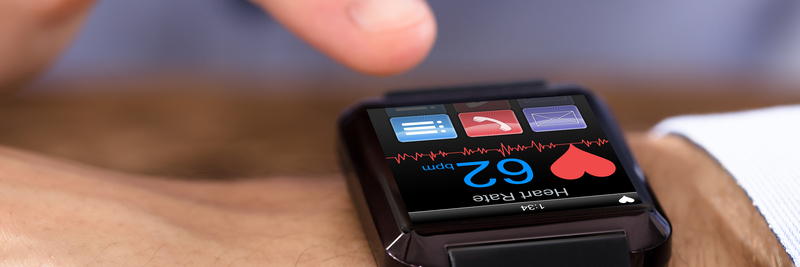How Wearables Have Revolutionized Healthcare
Wearable technology is transforming the healthcare sector as we know it. These electronic devices have sensors and processors to track vital health metrics and facilitate seamless communication with medical providers. The most common types of wearable devices are smartwatches, smart glasses, smart rings, and the like.
Wearable devices collect millions of healthcare-related data points, from daily steps to heart rate and burned calories. This article will examine how they’ve revolutionized the healthcare sector.
How wearables are transforming the healthcare sector
Wearables have made a considerable impact in the healthcare sector in various ways, including:
1. Detecting health conditions
Wearable technology has revolutionized the way we track health conditions and diagnose ailments. These devices can be worn anywhere and continuously monitor health-related metrics. They can even alert users to unusual conditions, such as an abnormally slow or fast heart rate.
The famous Apple Watch can track heart rate, sleep patterns, and blood oxygen. It also has a Fall Detection feature that calls emergency services if it detects a hard fall that leaves you immobile for over a minute. There are hearsays that new-generation Apple watches will come with a blood pressure tracking feature, but that’s not been officially confirmed.
2. Remote patient monitoring
Wearable devices can track and deliver metrics in real-time to external devices. This feature benefits individuals with severe medical conditions or those recovering from surgeries who need close monitoring. A patient can be sent home, and their wearable device constantly feeds vital metrics to the doctors and nurses at the hospital. This way, doctors can quickly raise an alarm if they observe abnormalities with the patient.
3. Promoting healthy lifestyles
Wearable devices help promote healthy lifestyles to benefit users. A smartwatch can remind users to exercise daily and watch their sleep patterns. It can remind users to take their medications to stay healthy. The constant metrics wearables feed to users encourage them to keep up a healthy lifestyle.
For instance, daily feedback on the number of steps a user takes encourages them to keep up with the recommended number of steps and stay fit. This healthy lifestyle benefits both the end user and the medical providers, who will see fewer patient issues.
4. Clinical trials
Wearables are valuable tools for clinical trials and research. They’ve made it easier for medical providers to conduct large-scale studies that require constant monitoring of the subjects. Usually, these subjects would need to be physically present for the doctors and researchers to monitor their results. However, wearables allow researchers to monitor trial subjects remotely and record accurate results.
Wearables have reduced and will continue to reduce the costs of clinical trials as they become more sophisticated. This benefit is invaluable because medical trials usually cost tens to hundreds of millions of dollars. Reduced trial costs mean medical and pharmaceutical researchers can roll out treatments faster and more affordably.
5. Data-driven decision making
Medical care relies primarily on data. The more accurate the data medical providers have, the better their decisions can be. Wearables are ushering in a new wave of data-driven decision-making and enabling medical providers to deliver better patient outcomes.
The unpleasant truth is that although data collection has greatly improved in the healthcare sector, doctors still significantly rely on guesses to diagnose and treat ailments. Wearables are changing the story and improving data collection at an unprecedented rate.
Wearable technology in healthcare: challenges
Wearable technology offers many healthcare benefits but also has its challenges. The primary challenge is data privacy and security, as many smart devices are vulnerable to hacking and data tampering.
Wearables collect sensitive healthcare information, which can be dangerous in the wrong hands. Hence, wearable companies must do everything possible to secure user data and provide accurate records. The ecosystem of developers building apps for wearable devices also needs to be boosted.
Conclusion
Wearables are transforming the healthcare sector for good. They’re also greatly impacting other sectors like education, retail, and entertainment. We’ve explained the great strides wearable devices are making in the healthcare industry– it’s something to watch out for, especially if you’re a health worker.
SixSigma.us offers both Live Virtual classes as well as Online Self-Paced training. Most option includes access to the same great Master Black Belt instructors that teach our World Class in-person sessions. Sign-up today!
Virtual Classroom Training Programs Self-Paced Online Training Programs







